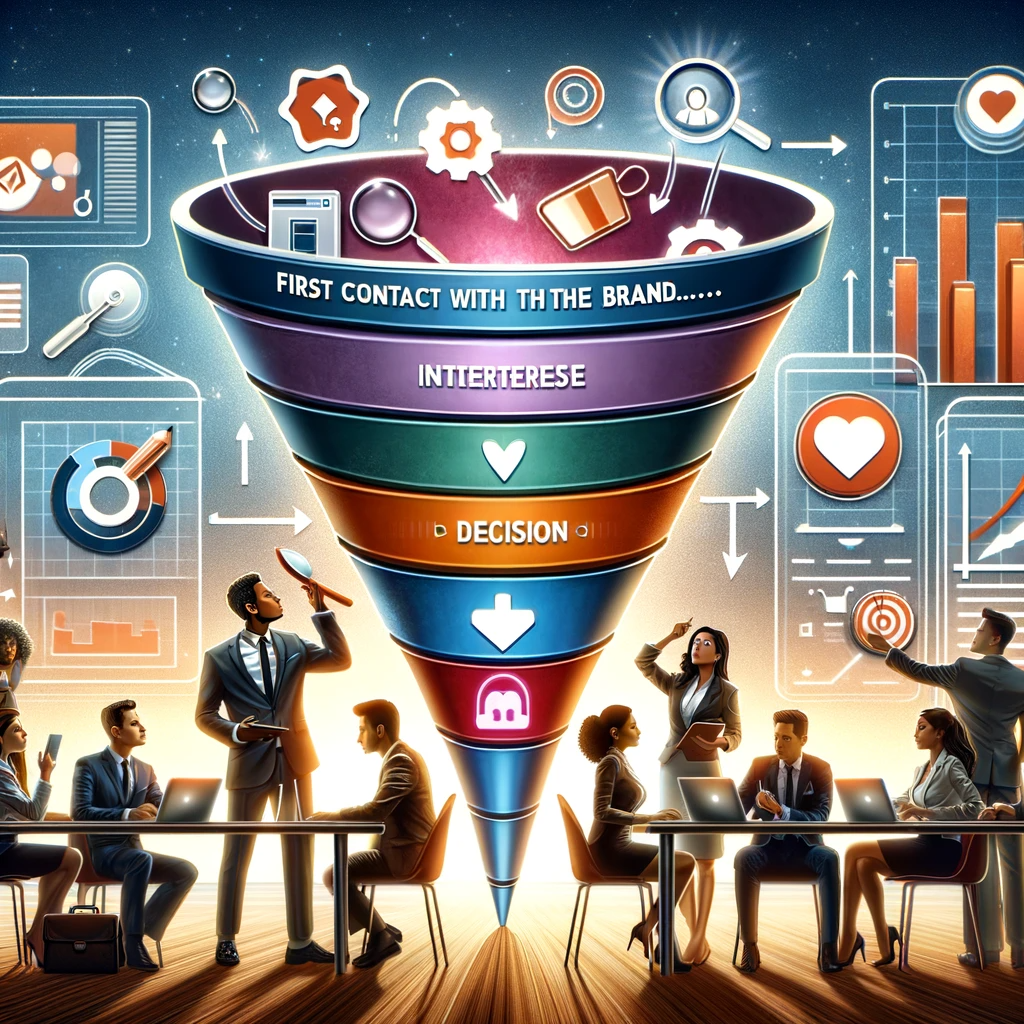Najpierw potencjalny klient ma pierwszy kontakt z marką, potem dokonuje zakupu, aby ostatecznie polecać Ciebie swoim znajomym i użytkownikom Internetu. Drogę, jaką taki klient musi pokonać, nazywamy lejkiem marketingowym. Składa się on z kilku poziomów i klienci mogą się zatrzymać na dowolnym z nich. Naszym celem jest jednak doprowadzić ich do końca.

Od potencjalnych do zadowolonych klientów
Lejek marketingowy w obrazowy sposób prezentuje drogę klienta od pierwszego kontaktu z marką aż do zakupu. Dzięki niemu łatwej jest dopasować konkretne działania marketingowe do grupy klientów z danego poziomu lejka. Zgodnie z nazwą na górze lejek jest szeroki i w tym obszarze potencjalnych klientów jest najwięcej. Zwęża się ku dołowi, aby na samym dole pozostali tylko lojalni klienci.
Jakie etapy lejka marketingowego wyróżniamy?
- Potencjalni klienci, u których budujemy świadomość ich potrzeb oraz konkretnego problemu, który my możemy rozwiązać.
- Potencjalni klienci, którzy rozważają opcję skorzystania z naszej oferty. To oni porównują dostępne rozwiązania i szukają na ich temat bardziej szczegółowych informacji.
- Klienci, którzy dokonują zakupu. Podejmują konkretną decyzję oraz negocjują ofertę.
- Lojalni i zadowoleni klienci, korzystający częściej z naszej oferty i polecający innym naszą markę.
Dlaczego warto stworzyć lejek marketingowy?
Ułatwia on opracowanie konkretnych typów klientów i zrozumienie ich potrzeb. Dzięki temu z większą skutecznością możemy zaplanować strategię sprzedażową. Działania marketingowe dopasowujemy do poszczególnych etapów lejka, co pozwala z większym powodzeniem zamieniać potencjalnych klientów w klientów, a potem w klientów lojalnych.
Lejek marketingowy jest więc narzędziem porządkującym rodzaje klientów, ich zachowania, preferencje i poziom zaangażowania.
Poziom lejka, a forma przekazu
Na każdym poziomie lejka istnieją inne formy przekazu, którymi użytkownik będzie zainteresowany i które będą naprawdę przynosiły pożądane efekty.
W przypadku potencjalnych klientów koncentrujemy się na wiedzy na temat produktów i usług. Bardzo dobrze sprawdzają się artykuły blogowe, poradniki, posty w mediach społecznościowych i podkasty. Nieco niżej, wśród klientów rozważających zakup, należy skoncentrować się na statystykach i raportach, webinariach i mailingu. Na etapie decyzji zakupowej w centrum zainteresowania klienta jest już cennik, opinie innych klientów, a także case study. Na poziomie lojalnych klientów pojawiają się już forum dla klientów, baza wiedzy i wszelkiego rodzaju informacje o rabatach.
Dobrze opracowany lejek marketingowy i dopasowanie narzędzi do poszczególnych jego etapów pomaga w „przesuwaniu się” klientów ku dołowi. Potencjalnego klienta musimy zainteresować, rozważającego przekonać, zdecydowanego zatrzymać na dłużej, a lojalnego nagradzać i wspierać.

